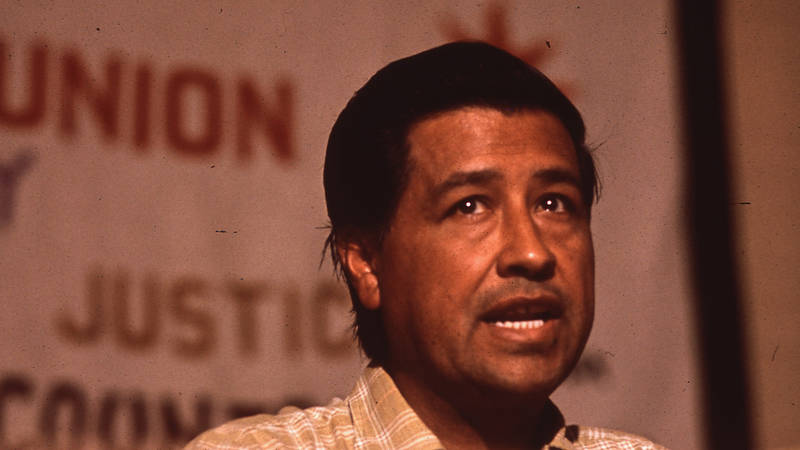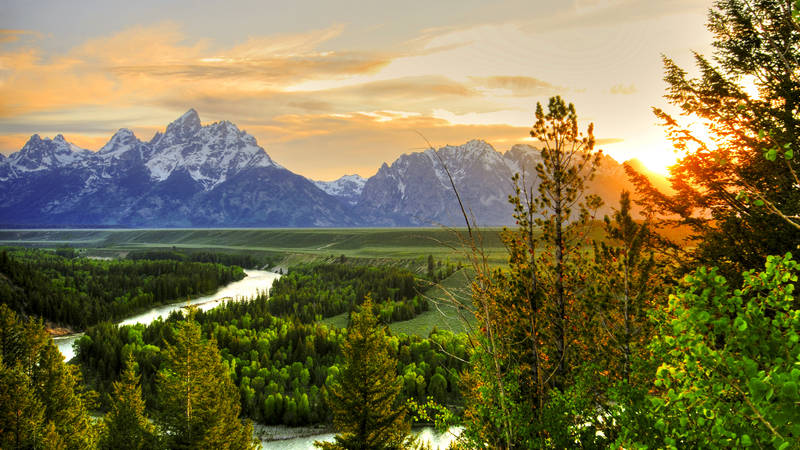The National Park Service needs to do more to connect diverse communities with public lands — and we need to support and fund these efforts.
In the summer of 1963, when I was growing up in what is now Pico Union near downtown Los Angeles, my father decided we should go on our first camping trip for our family vacation. We packed up the Ford and drove to Sequoia National Park, Yosemite National Park, and Lake Tahoe. My grandmother, who was visiting from New York, joined my father, mother, sister, and me, along with my friend Julio, whose family was also from Guatemala. We camped in a canvas tent large enough to stand up in, cooked our meals on a Coleman stove, lit up the night with a Coleman lantern, and slept on inflatable plastic air mattresses. Me and Julio shivered floating down cold creeks on the mattresses too. We had fun. That’s why we went camping and loved it. Sleep-away camps were not an option for us. There were virtually no parks where we lived. The nearest park was MacArthur Park, which my father always called “el parque de los viejitos,” the old folks’ park, because there were a lot of old folks there and no places for children to play.

Preserving More of Our History in Southern California and Beyond
3 ways the federal government can honor Hispanic Heritage Month by including irreplaceable cultural sites in the National Park System
See more ›Our family outing illustrated patterns later documented in research on parks, health, and justice. Children who are introduced to nature growing up tend to return to nature later in life. When Latinos go camping, they tend to do so in larger groups, with extended families and friends. Pico Union is one of the most park-poor neighborhoods in California. Children of color have the worst access to parks and school fields and are the most at risk for obesity and diabetes and crime.
With my wife and sons we have returned to Sequoia, Yosemite, and other national parks many times. Over the years I backpacked in Big Sur, Tuolumne Meadows, Desolation Wilderness, the Trinity Alps, the Swiss Alps, the Adirondacks, Mt. Desert Island in Acadia National Park, Jacques-Cartier National Park in Quebec, Banff and Jasper in the Canadian Rockies, the West Coast Trail on Vancouver Island, Dinky Lakes, Anza Borrego, San Jacinto Wilderness, and other places.
Today, family outings like ours are threatened. The National Park Service faces budget cuts of 8 to 10% starting in January 2013 and continuing for a decade. The NPS budget for 2012 is $2.58 billion, about 15% below what it was ten years ago.
National parks support more than $30 billion in spending and more than a quarter million private-sector jobs each year in rural and urban communities that are gateways to the parks. Each dollar invested in park operations generates about $10 for local communities, and every two NPS jobs generate one job outside the park.

Support Increased National Park Funding
Preserving America’s heritage should be a bipartisan issue.
See more ›Park Service cuts could hurt the people of Southern California through lost local green jobs, lower visitation rates, decreased diversity, and the lost health and conservation benefits of parks.
The Santa Monica Mountains National Recreation Area, an national park site, is the largest urban national park in the country, with more than 150,000 acres of mountains and coastline in Los Angeles and Ventura counties. The area provides a seamless network of local, state, and federal parks, with places for physical activity and habitat for more than 450 animal species and 26 plant communities. Seven percent of parkland in Los Angeles County is within the national recreation area.
The Civilian Conservation Corps (CCC) offers valuable lessons for national parks today to get the nation back to work in the worst economic crisis since the Great Depression. The CCC was one of the most successful New Deal programs and appealed to people across the political spectrum and class lines. CCC employed 3 million young men, planted 2 billion trees, slowed soil erosion on 40 million acres of farmland, and developed 800 new state parks. Visits to national parks increased 600% from 1933 to 1941. Unemployed youth got paid, their minds and bodies grew stronger, and they contributed to society and stayed out of trouble as they learned the benefits of hard work, conservation, and recreation. Businesses sold goods and services to CCC camps.
Annual attendance at national parks through July 2012 totaled 201 million, up 1.5% from last year. Cuts could result in lower visitation rates and hurt efforts to diversify park access. According to a 2011 Park Service survey (PDF), 78% of visitors to national parks were non-Hispanic white in 2008-09, 9% were Latino, 7% were African American, 3% were Asian, and 1% were Native American. Visitation differences had not changed much since the previous survey in 2000.
The Park Service is working on park and health disparities. People of color and low income populations still face disparities regarding health and access to parks. For example, “In regard to obesity, 36 percent of black and 35 percent of Hispanic high school students nationwide are overweight or obese, while 24 percent of non-Hispanic white high school students suffer from these conditions,” according to the Park Service’s 2011 Healthy Parks, Healthy People US Strategic Action Plan (PDF).
Secretary of the Interior Ken Salazar is pushing the Park Service to designate sites related to the histories of women and people of color as national parks or historic monuments, landmarks, or places.

On the Eve of the National Parks’ Centennial, We Must All Work to Make Parks More Diverse
Next year marks the 100th anniversary of the National Park Service. I cannot imagine a world without the beauty these spaces offer us.
See more ›The Park Service is taking steps to diversify park access locally. For example, the agency is opening an outreach office in the Los Angeles Plaza Historical District, which is listed in the National Register of Historic Places. “The satellite office will be part of our continuing efforts to diversify visitorship and raise awareness about the incredible outdoors experience that is available right in L.A.’s backyard,” according to Lorenza Fong, acting superintendent for Santa Monica Mountains National Recreation Area. Park Service staff are taking residents from park-poor communities to the Santa Monica Mountains, building on Transit to Trails. The recreation area hires diverse high school students from Los Angeles and Oxnard and prepares them for careers in the Park Service. The L.A. Conservation Corps provides jobs for inner city youth at Channel Islands National Park. The Park Service is studying the creation of a national recreation area to bring the San Gabriel Mountains closer to the people. Secretary Salazar has made greening the Los Angeles and San Gabriel Rivers national urban water priorities.
Professor Myron Floyd of North Carolina State University has long asked, “Who has access to national parks, and why?” He analyzes five hypotheses — interpersonal discrimination, institutional discrimination, marginalization, cultural values, and assimilation — and concludes that the relationships between ethnic factors and national park visitation are complex and not easily reduced to single causes with clear policy and management implications. He nevertheless emphasizes that it is necessary “to help create ways to transcend the boundaries that retard access to national parks.” Has the Park Service done enough? I asked Professor Floyd, and he said: “Based on the 2011 survey results, no. Much remains to be done.”
The boom, not the slump, is the right time for fiscal austerity, as John Meynard Keynes emphasized. Funding for national parks will promote the simple joys of being in the park, jobs, health, heritage, and conservation, with equal justice for all. Much remains to be done, and now is no time to cut back.
Originally published for the Green Justice Column for KCET Departures. Reprinted with permission.